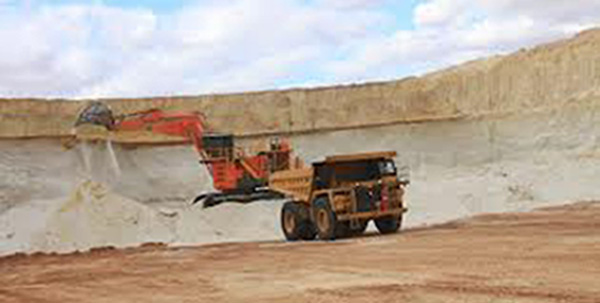The economic news has been a mixed bag in recent years for American mining equipment manufacturers and their supply chain. Sales have slipped because of a combination of factors, including a weak global economy, constrained credit, lower commodity prices and competition from abroad. The sharpest downturn occurred in 2009, when many industry players reported losses.
However, the industry is expected to rebound during the next five years as energy and mineral exploration and production heighten to meet growing worldwide demand, according to the analyst group IBISWorld.
The group projects that industry revenue will increase at an annual rate of 2.7 percent and total $30.8 billion by 2018. Mining and mineral processing industries and contractors will account for about 10.2 percent of the increase. More than half of the revenue will be attributed to exports. The weak U.S. dollar, coupled with rising demand in Mexico and Canada, will keep these exports strong as well as rising demand for minerals in expanding South American and Asian economies. Base mineral prices are projected to rise and spark the reopening of idled mines all over the world, particularly those for nickel and aluminum.
Demand for coal, iron ore, and bauxite will rise with global economic fortunes: coal will be critical to developing nations with sharply rising demands for electricity, and demand for iron ore for steel production will grow in these same nations as they build up their infrastructure and their auto manufacturing industries.
Competition from other nations, particularly China, is on the rise, however. The usual factors — higher operational efficiencies due to the availability of low-cost labor plus a lack of regulation — have given China an advantage in the manufacture of mining equipment. The IBISWorld report notes, however, that U.S. has traditionally had a trade surplus with China in mining equipment. This is due not only to a soft dollar, but other factors including the strong brand recognition of such U.S. companies as Caterpillar and Joy Global.
IBISWorld analyst James Crompton told IMT that end user markets typically value product quality more than price, due to the potential pitfalls of underinvesting in equipment, which could include accidents, machinery repair costs and replacement, and production inefficiencies.
Boosting Efficiency
While the market for traditional mining equipment might be soft, there are niche markets with more promise, particularly when it comes to ways to boost efficiency.
Declining productivity is no stranger to most mining operations. Easy-to-reach surface reserves are becoming depleted, and remaining deposits are harder to get to, either because they are deeper or in more remote locations. This makes operations more expensive, shrinking profit margins substantially. As a result, many companies have turned to solutions that collect data and generate intelligence to help them make better mining decisions. Such solutions enable companies to continually monitor asset performance in real-time to optimize production, cut waste, and reduce operating costs.
Automation will become critical to boosting efficiency, Crompton said.
“Robotics are expected to play an increasing role in mining operations,” he said. “Because mines are focusing on improving margins and returns on investment, OEMs are likely to invest the research and development of products that can be operated remotely. For example, BHP Billiton recently launched a remote operation center in Perth, Australia, and also maintains a fleet of driverless trucks, as does Rio Tinto. By minimizing contracted labor and maximizing worker safety, automated machinery is expected to gain in popularity.”
Green Mining Opportunities
Environmental regulation has had a powerful effect on the mining equipment industry in recent years. Even in China, restrictions put in place in 2010 by the government have prompted changes in traditional practices in order to “green” mining sites. Operations are under pressure to do away with, or use less of, such materials as mercury and cyanide that were traditionally used in the recovery of some metals. This has required not only a boost in efficiency, but the application of mining techniques that use less water and energy, create less waste, and lower the risk of site contamination.
Another upside to greener mining equipment and techniques is faster permitting through national and local environmental protection agencies. Companies working on emerging technologies in treatment of mine tailings, water treatment, carbon sequestration and hydrometallurgy for extraction of metals from ores are seeing significant interest in their systems. For mining operations located in remote areas or those with mandates to reduce energy use, there is increasing interest in mining equipment powered by cleaner alternatives such as lithium-ion batteries.
Going forward, mining equipment companies that emphasize efficiency and reduced waste are likely to be winners.
